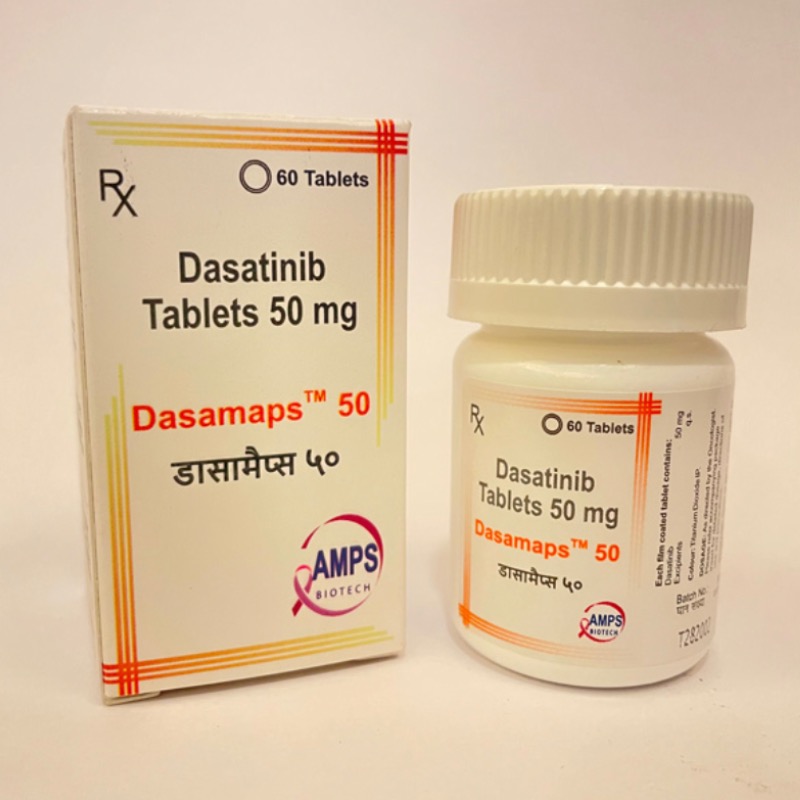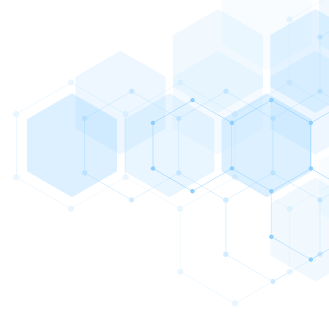• Potent inhibitor of the Bcr-Abl kinase and Src family of kinases (Src, Lck,
Yes, Fyn), c-Kit, and PDGFR-β.
• Differs from imatinib in that it binds to the active and inactive
conformations of the Abl kinase domain and overcomes imatinib
resistance resulting from Bcr-Abl mutations.
MECHANISM OF RESISTANCE
Single point mutation within the ATP-binding pocket of the Abl tyrosine kinase
(T3151).
ABSORPTION
Dasatinib has good oral bioavailability. Rapidly absorbed following oral
administration. Peak plasma concentrations are observed between 30 minutes
and 6 hours of oral ingestion.
DISTRIBUTION
Extensive distribution in the extravascular space. Binding of parent drug and its
active metabolite to plasma proteins in the range of 90%–95%
METABOLISM
Metabolized in the liver primarily by CYP3A4 liver microsomal enzymes. Other
liver P450 enzymes, such as UGT, play a relatively minor role in metabolism.
Approximately 85% of an administered dose is eliminated in feces within 10 days.
The terminal half-life of the parent drug is on the order of 4–6 hours.
INDICATIONS
1. FDA-approved for the treatment of adults with chronic phase (CP),
accelerated phase (AP), or myeloid or lymphoid blast (MB or LB) phase
Ph+ CML with resistance or intolerance to prior therapy incuding
imatinib.
2. FDA-approved for the treatment of adults with Ph+ ALL with resistance
or intolerance to prior therapy.
3. FDA-approved in newly diagnosed adult patients with Ph+ chronic
phase CML.
4. FDA-approved in pediatric patients one year of age and older with Ph+
CML in chronic phase.
5. FDA-approved in combination with chemotherapy in pediatric patients
one year of age and older with newly diagnosed Ph+ ALL.
DOSAGE RANGE
1. Chronic phase CML, adults: 100 mg PO once daily. A lower dose of 50 mg
PO once daily can be used, as it is well tolerated and active.
2. Accelerated phase CML, myeloid or lymphoid blast phase CML, or Ph+
ALL, adults: 140 mg PO once daily.
3. Chronic phase CML, pediatrics: starting dose based on body weight.
DRUG INTERACTION 1
Dasatinib is an inhibitor of CYP3A4 and may decrease the metabolic clearance of
drugs that are metabolized by CYP3A4.
DRUG INTERACTION 2
Drugs such as ketoconazole, itraconazole, erythromycin, and clarithromycin
decrease the rate of metabolism of dasatinib, resulting in increased drug levels
and potentially increased toxicity.
DRUG INTERACTION 3
Drugs such as rifampin, phenytoin, phenobarbital, carbamazepine, and
St. John’s Wort increase the rate of metabolism of dasatinib, resulting in its
inactivation and lower effective drug levels.
DRUG INTERACTION 4
Solubility of dasatinib is pH-dependent. In the presence of famotidine, PPIs, and/
or antacids, dasatinib concentrations are reduced.
SPECIAL CONSIDERATIONS
1. Oral dasatinib tablets can be taken with or without food but must not be
crushed or cut.
2. Important to review patient’s list of medications, as dasatinib has several
potential drug–drug interactions.
3. Patients should be warned about not taking the herbal medicine
St. John’s Wort while on dasatinib therapy.
4. Monitor CBC on a weekly basis for the first 2 months and periodically
thereafter.
5. Use with caution when patients are on aspirin, NSAIDs, or
anticoagulation, as there is an increased risk of bleeding.
6. Closely monitor electrolyte status, especially calcium and phosphate
levels, as oral calcium supplementation may be required.
7. Sexually active patients on dasatinib therapy should use adequate
contraception.
8. Avoid Seville oranges, starfruit, pomelos, grapefruit, and grapefruit juice
while on dasatinib therapy.
9. Patients should be closely monitored for depressive symptoms and
suicide ideation while on therapy.
10. Pregnancy category D. Breastfeeding should be avoided.
TOXICITY 1
Myelosuppression with thrombocytopenia, neutropenia, and anemia.
TOXICITY 2
Bleeding complications in up to 40% of patients resulting from platelet dysfunction.
TOXICITY 3
Fluid retention occurs in 50% of patients, with peripheral edema and pleural
effusions. Usually mild-to-moderate severity.
TOXICITY 4
GI toxicity in the form of diarrhea, nausea/vomiting, and abdominal pain.
TOXICITY 5
Fatigue, asthenia, and anorexia.
TOXICITY 6
Elevations in serum transaminases and/or bilirubin.
TOXICITY 7
Hypocalcemia and hypophosphatemia.
TOXICITY 8
Cardiac toxicity in the form of heart failure and QTc prolongation. Occurs rarely
(3%–4%). Pulmonary hypertension can also occur (5%).
TOXICITY 9
Insomnia, depression, and suicidal ideation
This is used to treat a certain type of chronic myeloid leukemia (CML; a type of cancer of the white blood cells) as a first treatment and in people who can no longer benefit from other leukemia medications including imatinib (Gleevec) or in those who cannot take these medications because of side effects.


Login To Comment